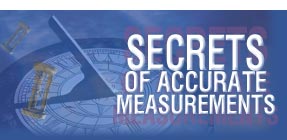 |
 |
 |
| RU |
|
Login
Newsletters
There is no newsletter category found. Information
|
ISO standard to protect machine operators from injury and fatal accidents 01/06/2011 The new ISO 12100 standard on risk assessment and risk reduction for machinery will protect operators better and help designers and manufacturers reduce safety hazards.
Accidents involving machinery incur high costs, both in human terms and also economic and societal ones. Although calculating an exact figure is unrealistic, recent studies have shown that for a single accident the total cost to the individual and to society can be as high as USD 1 million.
With the new ISO 12100:2010, Safety of machinery – General principles for design – Risk assessment and risk reduction, designers will be able to identify risks during the design stage of machine production and hence reduce the risk of future accidents.
The risk assessment guidelines provided in the standard are presented as a series of logical steps. These will help designers to systematically determine the limits of the machinery; identify risks of hazards like crushing, cutting, electrick shock or fatigue; and estimate potential dangers ranging from machine failure to human error.
The information obtained through this process will allow producers to determine whether a machine is sufficiently safe or not. In the eventual case that the machine is found to be unsafe, this information will be valuable for the subsequent risk reduction stage. The process would then be repeated until the machine is established as adequately safe for use.
By providing a best practice framework at the international level, ISO 12100 will help eliminate technical barriers to trade while maintaining the safety and health of users of machinery, in line with requirements of national legislations of different countries around the world.
ISO 12100:2010 replaces ISO 12100-1:2003, ISO 12100-2:2003 and ISO 14121-1:2007. It is intended to be used as a basis for the preparation of type-B (generic safety standards) dealing with one safety aspect or one type of safeguard that can be used across a wide range of machinery or type-C safety standards (machine safety standards) dealing with detailed safety requirements for a particular machine or group of machines.
ISO 12100:2010, Safety of machinery – General principles for design – Risk assessment and risk reduction, was developed by ISO/TC 199, Safety of machinery, which works together with industry, health and safety bodies, authorities, unions, employer’s associations and international organizations such as the International Labour Organization (ILO) and the World Health Organization (WHO) to develop standards that reduce the risks of injury from machinery at home, work and during leisure activities.
ISO 12100:2010 is available from ISO national member institutes (see the complete list with contact details) and may also be obtained directly from the ISO Central Secretariat, price 180 Swiss francs, through the ISO Store or by contacting the Marketing, Communication and Information department (see right-hand column).
www.iso.org - News and media Related Information: |
Current issue
Search
|
|
|
| © "Test & Measuring Instruments and Systems" ("KIPiS"), 2000-2024 |

























